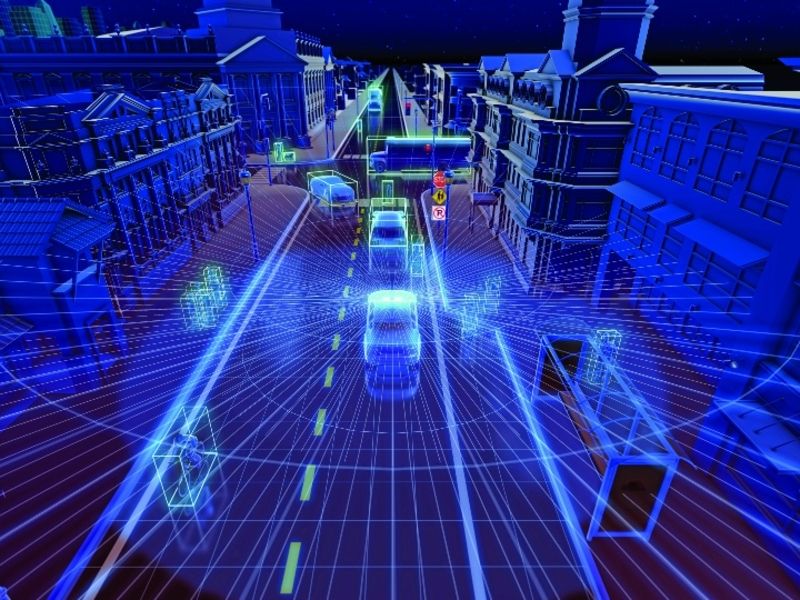
Even as vehicles are equipped with more advanced driver-assistance systems and detection technologies, pedestrian fatalities are growing exponentially, particularly in the dark.
From 2010 to 2019, nighttime pedestrian fatalities increased by 54 percent, compared with a 16 percent increase in daytime pedestrian fatalities, according to a report last month from the Governors Highway Safety Association.
Technologies such as pedestrian detection and automatic emergency braking are designed to help prevent such tragedies, but current systems can only go so far. Most of them still rely on cameras to determine if there is something in front of the vehicle, said David Aylor, manager of active safety testing at the Insurance Institute for Highway Safety.
“In low-light situations, those cameras — just like our eyes — really struggle,” Aylor said. “AEB systems do well during the day; they don’t do as well at night.
“On top of that, headlights aren’t as good as they could be,” he added. “If you have a vehicle that is equipped with an AEB system that does a good job at recognizing pedestrians during the day, if their headlights aren’t adequate, the camera is not going to be able to detect the pedestrians. It’s really a challenging situation for the current systems.”
Velodyne Lidar Inc. says it has a solution. The Silicon Valley sensor company has been testing a pedestrian automated emergency braking, or PAEB, system equipped with lidar and software that it says is more effective at detecting pedestrians at nighttime than radar and camera-based systems. Lidar uses pulsed lasers to measure the distance to an object.
“Camera- and radar-based systems as they exist today have very high degrees of false positives and false negatives,” said Velodyne CEO Anand Gopalan. “We can do so much better with a lidar-based system in conjunction with the software that we have developed.”
Velodyne’s PAEB system combines software called Vella with lidar sensors embedded around the vehicle. The software interprets lidar data to help the vehicle avoid moving and stable objects. It uses predictive collision monitoring, which compares a vehicle’s trajectory with that of other vehicles, pedestrians or objects on the road.
“If you’re able to create a lidar- based system that is able to do a Level 2 function like pedestrian-detection automatic emergency braking, the big advantage you have is now this is a system that works day or night with equal level of precision and accuracy, because it’s not sensitive to ambient light like a camera-based system, and you’re able to effectively provide coverage in many cases all around the vehicle,” Gopalan told Automotive News.
Velodyne says that its lidar sensors allow for more precise measurements and more efficient computing than is possible with camera-based systems.
“When you do this, you’re able to create something that’s far more robust and far safer than existing systems out there,” Gopalan said.
There’s still a way to go with lidar- based automatic emergency braking systems.
Gopalan could not yet speak about potential customers but said he is having active conversations in the industry about the technology. Broadening industry adoption of lidar is key, he said.
“There is no argument to be made to not include these systems in cars that you and I can buy,” Gopalan said.
Cost, in particular, also remains a critical factor to consider.
The cost could be reduced as the technology scales, or as a result of agency or federal government requirements for greater performance, such as through NHTSA, Aylor said.
“As these vehicles push the limits of partial automation, it’s likely they are going to need redundant sensors,” he said. “They’re going to need sensors that cover a wide range of weather, lighting, all sorts of other things. That’s going to be something else that’s going to push the more advanced technology.”

